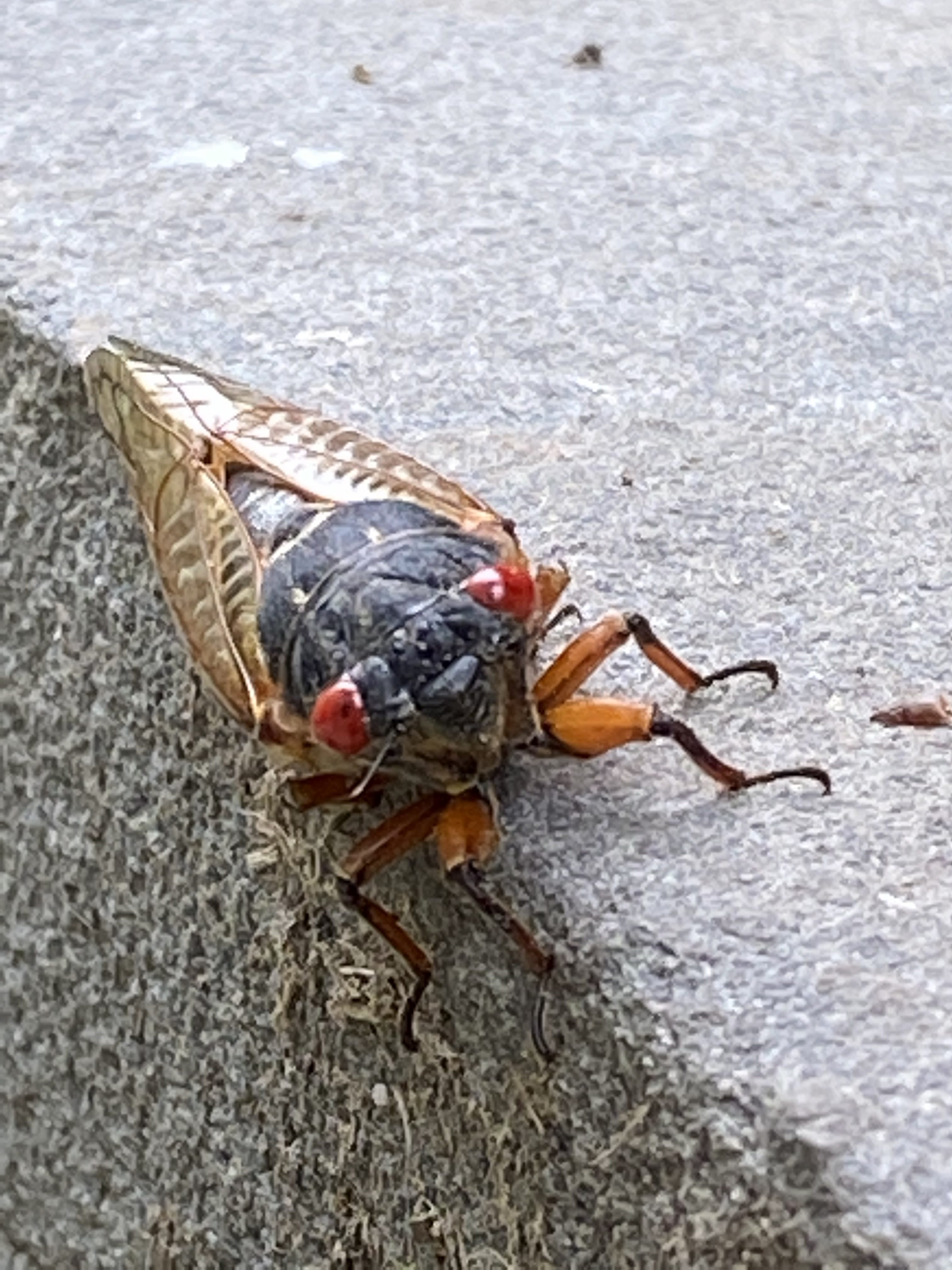Hello There! – Photo: L. Weikel
Since 2004
I don’t especially remember Brood X and its emergence 17 years ago. Since 2004, which I truly do not recall being a dramatic experience, the best I can recollect seeing a few more cicadas than usual was the brood that emerged in 2013 (Brood II). To be honest, that was not a particularly noteworthy experience either. (In other words, I was disappointed.)
I’ve been a little confused by Brood X and the maps I’ve seen as to where they’re to be expected to ‘arrive.’ But in finding the link to the map of the different broods for this post, I realize that in our portion of eastern Pennsylvania, there’s actually a crosshatch over us – indicating ‘multiple broods.’ That makes a little more sense to me, as I do recall hearing about (and experiencing somewhat) Brood II in 2013, as I mentioned.
They’re Emerging Now
I have a friend who lives only about 15 minutes north of me and she’s remarked and posted on FB for at least a week or ten days about the emergence of her cicadas. I was starting to think we’d missed the boat entirely and that the cicadas around here just weren’t going to live up to the hype. That’s how I felt in 2004 for sure. But I’m delighted to say that they are emerging now.
I saw a couple on Monday, the first tip-off being the discarded exoskeletons lying crushed on the flagstones underneath one of our Maples. Of course, that made me go on the hunt for those that had shed their shells, and I was rewarded with discovering two.
While I was sitting outside today, though, I started seeing them flying across the yard. I called Karl outside to show him, and we had to laugh because it wasn’t entirely clear whether we were seeing a couple different ones buzzing from tree to tree or whether it was the same one just going back and forth.
Of course, I later figured out there must be more hatching because I marveled when I saw a Downy Woodpecker snatch one of the clumsy flyers right out of the air and start munching on it. The mid-air capture was impressive. Then Spartacus pounced on something and I realized he, too, had discovered one. Poor guy – I made him give it up.
I’ve only heard a couple males singing so far. While I realize their calls can become deafening, I have to admit I’ve never experienced that many around me at one time to feel overwhelmed by them. I’m hoping this year yields more cicadas than either 2004 or 2013.

Cicada 2 -Photo: L. Weikel
Tracking the Broods
Of course, being the Nature Nerd that I am, I downloaded the app Cicada Safari, which is used to track the emergence of the cicadas and note the differences between broods, as well as a variety of other variables. I’ve submitted two of the photos in this post to them for their records and have yet to hear back whether they will be accepted and noted on the app’s map.
It’s interesting to note that, predictably, scientists are tracking the disappearance of some broods. I’m hoping that perhaps the members of Brood II (2013) and Brood X (2004 and 2021) will be making a strong comeback this year.
And as I prepare to do my Perelandra Biodiversity Program protocol on June 1st, I am pondering whether purposely working to bring balance to our land and bolster the resilience of the biodiversity here will have any discernible impact on the cicadas. Obviously, I’m hoping every little bit any of us can do to promote the long term excellent health of our ecosystems is helping.
(T-184)
